Agile and Scrum Reveal Team Issues
Agile and Scrum expose underlying team and workflow issues, helping organisations address real problems rather than masking dysfunction with process …
Applying practical, experience-based problem-solving in complex environments.


Pragmatic Thinking is the application of practical, experience-based problem-solving in complex environments, enabling teams to navigate challenges effectively. This approach prioritises actionable insights over theoretical constructs, fostering a mindset that values real-world applicability. By focusing on what works in practice, teams can adapt their strategies to deliver value predictably and sustainably.
This concept is crucial in environments characterised by uncertainty and rapid change, as it encourages a culture of experimentation and learning. Teams employing Pragmatic Thinking are better equipped to identify and implement solutions that resonate with their specific context, rather than relying solely on prescribed methodologies. This adaptability not only enhances responsiveness to customer needs but also promotes resilience in the face of evolving market dynamics.
Pragmatic Thinking supports long-term systemic improvements by embedding a continuous learning ethos within the organisation. It empowers teams to reflect on their experiences, iterate on their processes, and refine their approaches, ultimately leading to enhanced performance and value delivery. By integrating this mindset into daily practices, organisations can cultivate a robust framework for sustained innovation and effective problem-solving, ensuring they remain competitive and relevant in their respective fields.
Agile and Scrum expose underlying team and workflow issues, helping organisations address real problems rather than masking dysfunction with process …
Optimising how often software is deployed to enhance feedback loops and value delivery.
Unlock engineering excellence with Azure DevOps, boost traceability, transparency, and developer experience for agile, high-performing teams.
Explains why a “Blocked” column in Azure DevOps hinders workflow, and suggests using tags and tracking to manage blocked work more effectively and …
Explores how teaching the reasons behind Agile practices boosts team engagement, collaboration, and continuous improvement, helping teams adapt and …
Using hypothesis-driven approaches to test ideas and validate assumptions in agile workflows.
Explains how true self-management in Scrum requires active, disciplined effort from Product Owners, Scrum Masters, and Developers, not chaos or lack …
The art of unlocking potential in teams and leaders through guidance rather than directives.
Manage Agile projects effectively with Azure Boards. Track work, optimise planning, and improve team collaboration.
Time to Market is one of the four key value areas of Evidence‑Based Management that focuses on organizational capability. It is not a single measure …
Explores how lack of authority hinders teams from removing project blockers and overcoming organisational inertia, stressing the need for real …
A Service Level Expectation predicts how long work items take to complete, helping Scrum Teams improve workflow, identify issues, and set clear …
Explores why Scrum Masters need authority, not just influence, to enforce Agile practices, remove blockers, and ensure teams follow Scrum for true …
Many companies mistake adopting Agile frameworks for true agility, but real success comes from customising ways of working to respond quickly to …
The FBI Sentinel project failed with a waterfall approach, wasting years and budget, but succeeded rapidly after switching to Agile and iterative …
Most companies struggle with agility due to rigid structures, outdated processes, and cultural barriers, not technical issues. True agility requires …
Learn what makes an effective Product Owner, why generic job specs fall short, and which key responsibilities and skills are essential for true …
Explores how agile teams can achieve predictable software delivery through quality focus, effective release planning, and continuous improvement, …
Explains how managing technical debt and distinguishing it from poor quality can boost product efficiency, reduce costs, and support sustainable …
Explores how DevOps transformation, refactoring, and ownership reduce technical debt, streamline development, and boost efficiency, team satisfaction, …
Explores how technical excellence in Agile development reduces risk, prevents technical debt, and boosts product quality and delivery speed through …
Learn key strategies for building business resilience and continuity, including observability, system decoupling, routine deployments, team …
Explores how optimising systems, reducing technical debt, and strong leadership improve engineering quality, productivity, and innovation while …
Explains why staggered iterations harm software delivery, increasing technical debt, and recommends cross-functional teams, test-first, and working …
Explores why true organisational agility needs more than Agile development, highlighting the importance of continuous delivery, quality, and removing …
Explores how Azure DevOps shifted from slow, two-year releases to rapid, continuous delivery, highlighting the benefits of fast feedback, agility, and …
Explores the financial, productivity, and reputational impacts of poor-quality code, and offers practical steps to turn code quality into a …
Explains technical debt in software development, its impact on teams, and practical strategies to identify, manage, and reduce it for long-term …
Explains the risks of the pick-n-mix branching anti-pattern in source control, its impact on code quality, and recommends feature branching and …
Explains how the Scrum Master is accountable for enabling effective product delivery, fostering team success, and ensuring each sprint produces a …
Learn how tailored DevOps strategies help organisations assess current practices, streamline processes, ensure compliance, and boost software quality …
DevOps consulting enhances Agile by improving collaboration, accelerating delivery, and ensuring quality, making software development more efficient …
Explains how Scrum Sprints are primarily for planning, not fixed delivery, and discusses aligning delivery schedules, continuous deployment, and …
Many Scrum Masters lack essential skills and experience, leading to poor agile outcomes. True competence requires deep knowledge, practical …
Learn how to use Kanban flow metrics in Scrum to improve value delivery, track progress, identify bottlenecks, and drive continuous improvement in …
Explains how simplifying complex software and committing to change enables continuous delivery, highlighting the need for cultural shift, resilience, …
Scrum Masters with deep knowledge and competence enable teams to deliver better products, drive business outcomes, and foster real improvement in …
Explains why story points and velocity can mislead Agile teams, and recommends focusing on throughput, cycle time, and customer value for effective …
Explores why fixed best practices don't suit complex continuous delivery, highlighting adaptive approaches like audience-based delivery, testing in …
Explores why special sprints like Sprint Zero or hardening sprints undermine Agile by delaying work, increasing risk, and reducing continuous delivery …
Is your engineering culture built to thrive on change? Discover how to create resilient, adaptive teams that stay ahead in a fast-moving tech world.
Explains why relying on special Sprints undermines Agile, and advocates for continuous improvement, accountability, and delivering usable products …
Discover how Joanna’s technical expertise, clear teaching, and real-world Agile experience make her Scrum.Org classes at NKD Agility essential for …
Struggling with legacy systems? Discover how to modernise securely, reduce risk, and build resilience, without trading old problems for new ones.
Explains how Kaizen’s continuous improvement principles enhance Scrum and Agile teams, with practical tips for retrospectives, workflow optimisation, …
Explores effective Agile transformation by empowering teams, improving collaboration, focusing on value delivery, and fostering continuous improvement …
Explores how practical use of Scrum fosters adaptability and resilience in teams, highlighting the value of flexibility over rigid rules in complex …
Learn three key Agile strategies: define clear completion criteria, avoid overcommitting in Sprints, and prioritise backlog refinement for better team …
Learn how effective Sprint planning boosts Agile team performance, with practical workshops, coaching, feedback, and adaptable methods for continuous …
Incompetent Scrum Masters reduce team performance and ROI by lacking key skills. Learn how to measure their impact using innovation, usage, and …
Explores key challenges in adopting DevOps, including managing evolving risks and closing feedback loops, with strategies for rapid iteration, …
Explains why true agility requires end-to-end automation and short feedback loops, not just Agile teams, to maximise value and efficiency for …
Explores how automation in testing, deployment, and validation streamlines development, reduces technical debt, and builds confidence for teams and …
Explores how frequent code deployments improve code quality, reduce technical debt, enable faster feedback, and support iterative, user-focused …
Explores a developer’s transition to DevOps, highlighting key challenges: cultural change, toolchain automation, and continuous learning for effective …
Explains why burndown charts hinder agile teams, highlighting the pitfalls of detailed upfront planning and advocating for minimal, adaptive Sprint …
Explores how routine Agile questions can hinder team progress, stressing the importance of focusing on value delivery, goal alignment, and managing …
Explains how to create, apply, and improve a Definition of Done (DoD) in Scrum to ensure software quality, transparency, and consistent delivery of …
Explains how evidence-based management uses reliable metrics and KPIs at team and organisational levels to drive better decisions, value delivery, and …
Explains how defining quality standards, acceptance criteria, and automation in software delivery leads to predictable outcomes, fewer bugs, and …
We partner with businesses across diverse industries, including finance, insurance, healthcare, pharmaceuticals, technology, engineering, transportation, hospitality, entertainment, legal, government, and military sectors.

Hubtel Ghana

SuperControl

Healthgrades

Ericson

Cognizant Microsoft Business Group (MBG)

Akaditi

Boeing

Xceptor - Process and Data Automation

Illumina

Capita Secure Information Solutions Ltd

Schlumberger

Flowmaster (a Mentor Graphics Company)

DFDS

Genus Breeding Ltd

Sage
Boxit Document Solutions

Freadom

Milliman

Nottingham County Council

Royal Air Force

New Hampshire Supreme Court

Ghana Police Service

Washington Department of Enterprise Services

Washington Department of Transport

ALS Life Sciences

Graham & Brown

Teleplan

Sage

Higher Education Statistics Agency

Alignment Healthcare